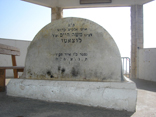In I got It!
An Ancient Aron Kodesh
The travels of an Aron Kodesh from Padwa to Jerusalem.
The Aron Kodesh was built in the year 1728/5488 in the town of Padwa in the Vento region of northern Italy. For over two-hundred years the majestic Aron Kodesh graced the Sefardic Shul in Padwa, but from 1892 (5652) all the Shuls in the town began to merge together into one main Shul – the Great Synagogue of Padwa. The Sefardic Shul was left empty, and the Aron Kodesh – orphaned.
Finally in the year 1955/5615 the historical Aron Kodesh was brought to Eretz Yisrael on the ship ‘Dorit’, as part of a campaign to bring over abandoned Aron Kodesh from scattered Jewish communities all over the world, after the War. Over the course of the campaign, almost forty Aron Kodesh were brought to Eretz Yisrael.
The Aron Kodesh from Italy was placed in the Shul ‘Heichal Shlomo’ – a spiritual-religious center that was established by the chief Rabbis of the time. The Shul was named in memory of Shlomo Wolfson, the father of Sir Isaac Wolfson who donated the money for the building.
Today, as mentioned, the Aron stands in the Wolfson Museum of Jewish Artifacts, and is presently one of the most magnificent items on show there.







